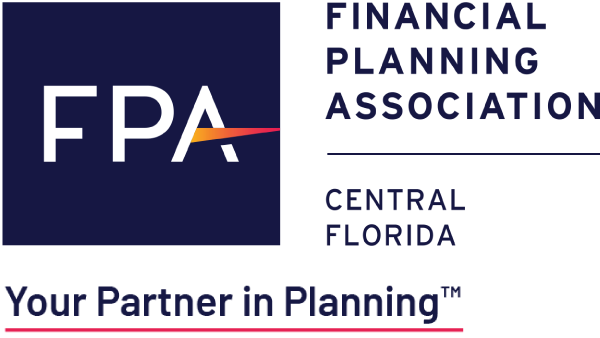
The CARES Act: What the Coronavirus Relief Package Can Do for You
It was President John F. Kennedy who famously said, “Ask not what your country can do for you, ask what you can do for your country.”

As the current global health crisis has made clear, the compact between the U.S. government and its citizens works both ways. As the COVID-19 pandemic was thrusting hardship upon individuals, families, communities and businesses across the American and global landscapes, the U.S. government was hastily enacting the CARES (Coronavirus Aid, Relief, and Economic Security) Act in an effort to help its citizens meet the escalating financial challenges they are facing as a result of the unprecedented crisis.
What exactly can the CARES Act do for individuals, families and businesses? And in situations where you are eligible to take advantage of a CARES Act provision, is doing so a wise move?
“The first step to determining who should take advantage of new government programs, is to understand what the programs are, and are not,” said FPA member Sean M. Pearson, a CERTIFIED FINANCIAL PLANNER™ professional based in Conshohocken, Pa. “Except for the Economic Impact Payments, the only way to avail yourself is to ask the questions and apply to the appropriate agency or organization.”
The payments to which Pearson refers are among about $2 trillion worth of financial relief included in the CARES Act. Here, he and other members of FPA offer their insight on those benefits and the best candidates to take advantage of them. For more details, visit the U.S. Treasury Department’s website.
FOR INDIVIDUALS AND FAMILIES
Economic Impact Payments: As of mid-April, the Treasury Dept. had begun issuing cash payments directly to citizens via check and electronic transfer, although many people aren’t likely to receive their payments until May or perhaps beyond. The payments are based on adjusted gross income (AGI) in the 2019 tax year (or the 2018 tax year for people have yet to file their 2019 federal returns), as detailed in the chart below. Adults are eligible for up to $1,200 ($2,400 per couple), and parents are due to receive $500 per child age 16 or under. No action is required by taxpayers to receive the payments.
Note: As part of the CARES Act, the U.S. government postponed the 2019 federal income tax filing and payment deadline from April 15 to July 15, 2020. More on the ramifications of that move for taxpayers can be found in a separate article from FPA.
| Filing Status | Rebate Reduced by 5% of AGI in Excess of | AGI Level Where Rebate Is Completely Phased Out (for Taxpayers Without Qualifying Children) |
| Married Filing Jointly | $150,000 | $198,000 |
| Head of Household | $112,500 | $136,500 |
| Other Individuals | $75,000 | $99,000 |
(source: T. Rowe Price)
What the financial pros say: How to put the payments to constructive use? People whose finances have been severely impacted by the pandemic — job loss, deep drop in income, straining their ability to cover basic household expenses — should prioritize covering their basic needs first.
For people whose cash needs aren’t as urgent, FPA member Scott A. Bishop, CFP®, executive vice president at STA Wealth Management in Houston, TX, suggests keeping that money as part of a cash reserve/emergency fund “until we see with greater clarity where all this is going to go.”
A strong cash reserve, with enough money in it to cover household expenses for three, six or even nine months to a year, provides critical protection in case of a drop in household income.
Increased unemployment benefits. An estimated 22 million Americans filed for unemployment benefits during a four-week stretch in March and April 2020. People who collect unemployment benefits in the 2020 calendar year will find those benefits have been enhanced in several ways. For one, eligibility has been expanded to include the self-employed, independent contractors, people with limited work history (those new to the workforce), and people who have been furloughed or are unable to work as a result of the coronavirus. The duration of benefits has been extended to last up to 39 weeks (depending on state laws). And benefit amounts have been increased by $600 per week through July 31, 2020.
What the financial pros say: If you’re among those eligible for benefits and become unemployed, be sure to file as soon as possible with the state in which you reside. Do so even if you aren’t sure whether you qualify. Use the money to cover your living expenses and necessary bills, and once those are covered, use the remainder to build your cash reserve, suggests Bishop.
Access to retirement account assets. The CARES Act gives people who have been directly impacted by the coronavirus the ability to access funds in their workplace retirement accounts [such as a 401(k)) and/or IRA via loans or withdrawals. If you, your spouse, or a dependent is diagnosed with COVID-19, or if you have incurred negative financial consequences as a result of the pandemic, you may be eligible to take a retirement account distribution of up to $100,000 without an early withdrawal penalty. Income taxes still will apply to withdrawals from tax-deferred accounts like traditional IRAs, but people can opt to spread those taxes over three tax years. They also can treat the withdrawal as a loan (if the retirement plan in which they are enrolled permits loans); if they repay the loan within three years, they may be eligible for a rebate of any taxes they paid on the withdrawal. This loosening of retirement account rules lasts until September 23, 2020.
What the financial pros say: As a general rule, financial professionals suggest that people tap their retirement accounts early only as a last resort, to cover necessary expenses. The pandemic certainly has thrust more people into dire financial circumstances. Bishop suggests people continue to treat these withdrawals as a last resort, and if they do tap retirement funds, to use the withdrawals only to cover necessary expenses. If you have the financial means to cover necessary expenses without depleting retirement plan assets, he recommends doing so.
Relief from RMDs. People who would have been obligated to take required minimum distributions, or RMDs, from their retirement accounts in 2020 won’t have to do so.
What the financial pros say: If you need the RMD money to cover necessary expenses, take the distribution. If you don’t need the money, or if you need less than what you would otherwise be required to take as an RMD, then you have the flexibility to take less of an RMD, or none at all. You’ll likely pay substantially less in 2020 taxes as result, since RMDs typically are taxed as ordinary income. As Bishop notes, this added flexibility also provides an opportunity to convert assets in a traditional IRA into a Roth IRA. Be sure to consult a tax and/or financial professional for advice on the merits of such a move, and how to go about executing it. Most financial and tax professionals are working through the COVID-19 crisis and are available by phone, email, video conference, etc. To find a CERTIFIED FINANCIAL PLANNER™ professional in your area, check out FPA’s searchable national database at www.PlannerSearch.org.
Student loan relief. The CARES Act suspends payments on federal student loans through Sept. 30, 2020, without any interest accruing, an important reprieve for people with student loan debt.
What the financial pros say: Here’s another instance where people under extreme financial duress can use these funds to cover necessary expenses. People who aren’t under financial duress should consider continuing to make payments, especially if they do not expect the loan balance to ultimately be forgiven.
Charitable contributions. For the 2020 tax year, people can take a tax deduction for up to $300 for eligible charitable contributions, even if they don’t itemize their deductions. For individuals and businesses who previously itemized their deductions, limits have been raised or suspended so more contributions are deductible this year. These contributions must be made in cash directly to a charitable organization, according to Bishop. Besides aiding taxpayers, these provisions are designed to encourage people to support charitable organizations in need during the crisis. Here’s another instance where it’s important to get guidance from a tax professional.
What the financial pros say: “If you’re looking to give cash to support an organization, this is a good year to give it,” says Bishop.
FOR SMALL BUSINESSES
The CARES Act established the Paycheck Protection Program (PPP) to provide small businesses with loan guarantees and grants to help them hold onto employees and remain viable through the pandemic. Loan amounts can reach up to 2.5 months of a company’s average payroll, and can be used to cover payroll and other expenses like benefits, mortgage, rent and utilities. The loans are available via the U.S. Small Business Administration (SBA; www.sba.gov) through any SBA 7(a) lender or through any federally insured depository institution, federally insured credit union or Farm Credit System institution that is participating. They carry interest rates that are capped at 4%, and may be partially or fully forgiven if the business recipient keeps all its employees on the payroll for eight weeks or more and the money is used for payroll, rent, mortgage interest or utilities. The Paycheck Protection Program is slated to last through June 30, 2020. Note: As of mid-April, PPP funds had been depleted and federal lawmakers were considering measures to replenish the program.
What the financial pros say: “Business owners and even independent contractors are eligible for the program. It’s a lifeline that can help keep them afloat.”
FOR EMPLOYERS
The CARES ACT includes various forms of relief for businesses of all sizes, according to Pearson, including:
- Allowing businesses to forego payments of the 6.2% Social Security tax in 2020; they can instead make those payments in 2021 and 2022.
- Increases the ability of companies to deduct net operating losses.
- Companies can earn workforce retention credits for retaining employees during the public health emergency.
- Accelerated recovery of alternative minimum tax (AMT) credits.
- Giving employers an enhanced ability to deduct business interest expenses.
With the COVID-19 crisis still raging throughout the United States, and economic conditions worsening as a result, there may be more help forthcoming from Uncle Sam in the months ahead.

